Advice, Buying Guides
A Beginner’s Guide to Knife Buying
Knife buying should be easy, see a knife you like, buy it. But with so many brands, features and just general knife jargon being thrown around, it’s easy to become overwhelmed by it all.
In the past I would simply buy whatever I liked the look of – I didn’t take anything else into consideration. That’s probably why I ended up owning some wholly unpractical knives that I have never actually used!
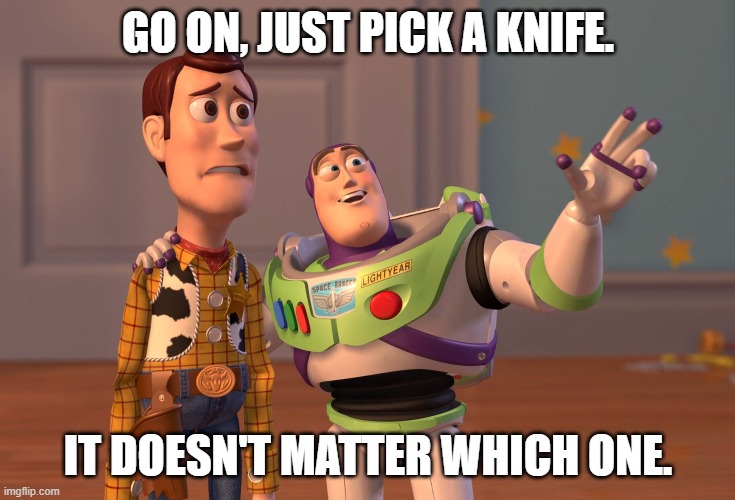
The survival knife with a 12” inch blade may look really cool, but it’s so damn big I’d probably end up chopping my hand off.
In hindsight, that seems to be a daft way of doing things, if your new to knife buying this is the post for you, hopefully you take a few lessons from the mistakes i’ve made in the past.
What do I need the knife for?
This seems like a fundamental question to answer, and one that I never considered previously.
It is a good place to start though…what do I need the knife for?
I am not a ‘collector’ by any means, so it’s not about owning a knife for the sake of it.
However, I love bushcraft and other outdoor pursuits, so let us start there.
I’m looking for a bushcraft knife…now what?
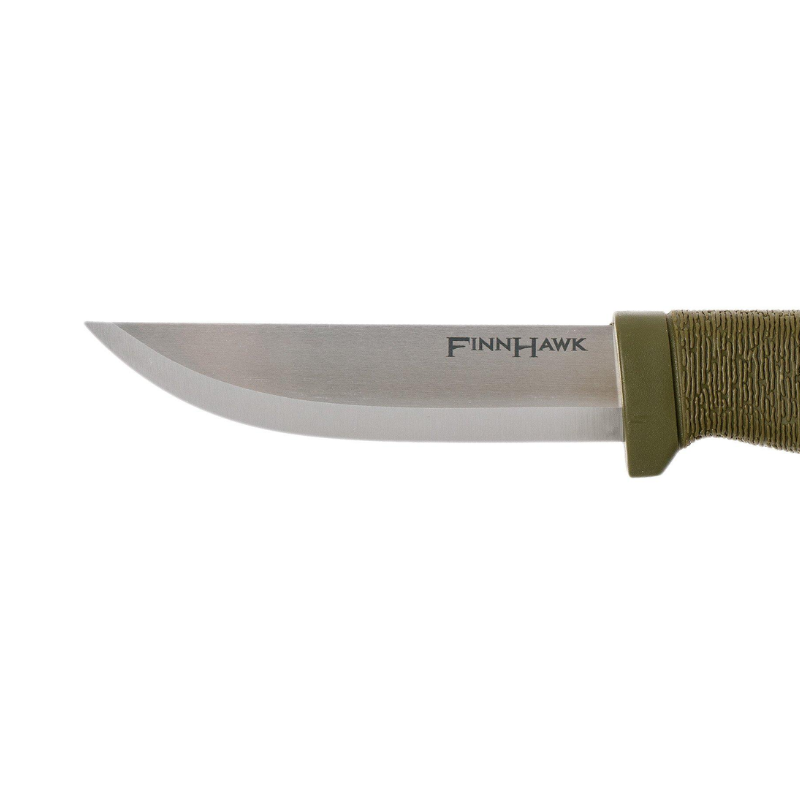
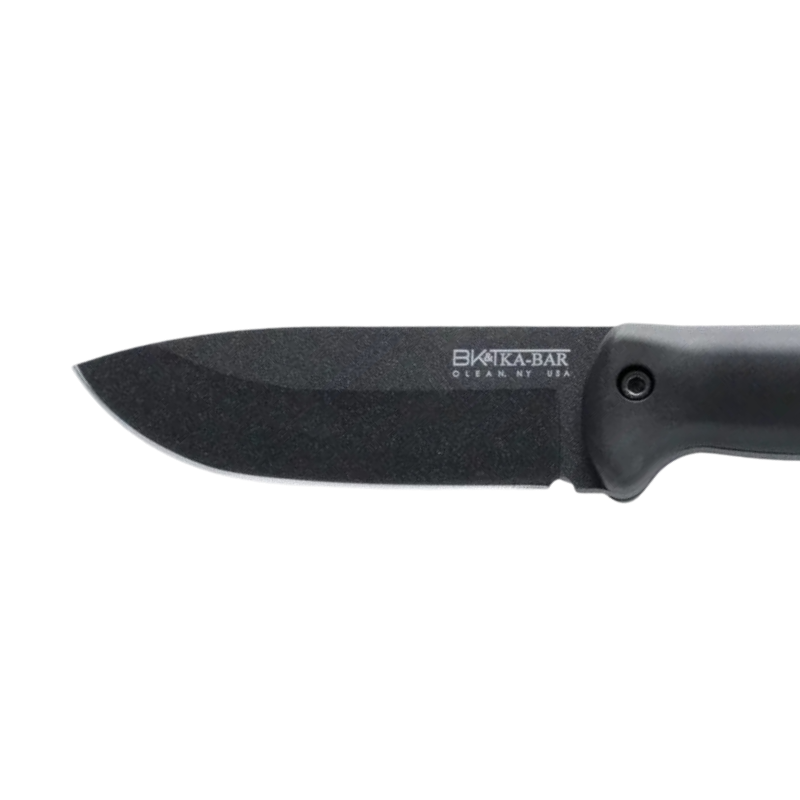
Now I have decided what I need the knife for, it makes the next step a little easier. I’ll just look for bushcraft knives…right?
Not necessarily.
Searching for ‘bushcraft knives’ just leads to more questions, so I needed to narrow it down a bit.
Given the myriad of blade styles and sizes I need to think about what I would be doing with the knife.
I won’t be hunting or skinning animals and I don’t intent to use the knife as a spear. I also won’t be clearing brush or hacking my way through jungle.
The likeliest thing will be cutting cord, a bit of whittling maybe, preparing food, trimming wood – basically standard camp activities.
Given I will be using it mostly for close work as well as some tougher tasks like battoning, I need something that is an all-rounder that would be tough enough to be used to split wood yet precise enough for carving.
When I take all that into consideration, I decide that either a drop point or a straight back blade would be ideal to meet my needs.
A straight back blade has a straight spine, so ideal for battoning. The drop point has a larger belly so ideal for cutting and slicing. Both would be great choices for camp side activities.
In this instance, I decided upon a drop point blade.
The reason for this is simple – aesthetics.
I just like the look of the drop point knives more than the straight back. To me, they are just more appealing. This, of course, is purely a subjective decision.
So that’s blade choice sorted, the next step is whether I go fixed or folding?
In the UK the laws on knife are very strict, so that is something I definitely need to take into account.
What are the UK laws regarding knives?
In the UK, I am legally allowed to carry a knife if it meets all the following criteria:
- The blade has a maximum length of 3”
- Are not lock knives (they do not have a button, spring or catch that you have to use to fold the knife)
- It cannot be an assisted opening knife
Knives that meet these three criteria we like to call EDC (every day carry). however keep in mind that using any knife in an intimidating or threatening way is not legal.
However! You may carry any non-banned blade you want, you just need a bloody good reason to do so! Examples of what you can carry and why you would be carrying them may be as follows:
- If you’re a deerstalker, you’ll may have a 4” fixed-blade on you.
- If you’re a buscrafter you may have a fixed blade knife, machete, perhaps even a hatchet or felling axe.
- If you’re a carpet fitter, you’ll have a knife in your van so you can perform you job.
- Some chefs only use their own knives and transport them to work and back each day.
The point is if you’re a deerstalker, you’ll be in the right enviroment and dressed like a dearstalker. So, if the police do question you about why you have a knife on you, it should be obvious to them that you are a deerstalker, going about your stalking!
We’d advise you to return straight home once you’ve completed the task you’ve brought your knife for. Say, for example, you’re in the town centre with a machete and you tell the police your deerstalking, it’s not going to be believable and you’ll (quite rightly) be nicked.
The same goes with the other reasons. A carpet-fitter will be in their work van liveried up with “Carpet Master” or something along those lines you *should* be okay.
But, if you’re sat in the pub and proclaim “I’m a carpet-fitter, that’s why I have a 4” fixed blade in my bag, then again, you’ll (quite rightly) be nicked.
Without wanting to labour the point, it is EXTREMELY important that you have a very good reason for carrying a knife. You absolutely have to be able to back up that reason.
Please bear in mind that even if you did have a REALLY good reason for carrying a knife, a police officer may not think it’s good enough and nick you anyway. At all times you must use common sense and have a damned good context for carrying a knife.
If you don’t need it on you at that moment to do the task at hand, don’t have it on you – it’s as simple as that.
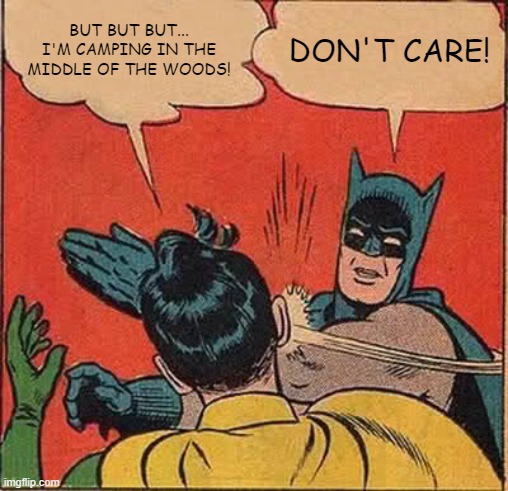
Ok, so that said, let’s carry on with my buying journey.
I’m looking at buying a drop point, and as I am ONLY going to use it when out in the wilds, I decide upon a fixed blade. This is because a fixed-blade knife is inherently stronger than a folding knife.
You can’t compare a solid piece of steel to a folding knife with a pivot. Don’t get me wrong, folders nowadays are super strong and even rival some fixed blades, but I want that reassurance of a fixed-blade knife, especially when battoning.
I won’t be carrying it at any other time, it’ll be kept with my bushcraft gear at all times and stored safely when I’m not out buschrafting.
When I am carrying it, I will be dressed the part, will have loads of other kit with me and will be out in the wilds.
I *should* be able to provide enough context and argue that I have a good enough reason to have it on me – it won’t be as if I am in the town centre in t-shirt and shorts with the knife strapped to my belt.
Now I have decided upon a fixed blade knife with a drop point handle, the next question I ask myself is one that has plagued man since time immemorial – is bigger better?
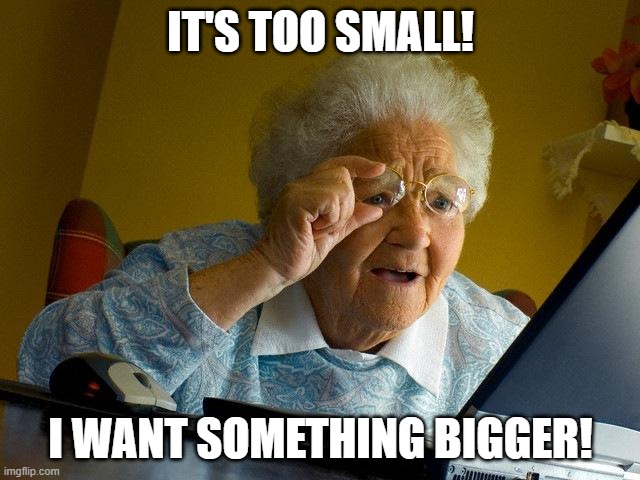
I already have a bloody great big survival knife that has seen zero use as it is too unwieldy for anything.
I want to be able to handle the knife safely – I don’t want my friends to know me as ‘Stevie Four fingers’ – so a smaller, easily controlled blade is key to my decision.
With this in mind, I decide upon a blade no bigger than 6”. This is small enough for control and precision but also large enough to tackle some of the tougher camp jobs.
So, to recap so far – I’m looking for a fixed blade knife with a drop point blade no longer than 6”.
Excellent, now I’m getting somewhere.
What is my next question at this point? I’d love to say that steel or handle material plays a big part but right now, the three main decisions have been made so now I want to think about price.
What do I really want to spend?
Of course, it would be lovely to grab myself a beautiful ESEE-5P-E, but at nearly £300 my wallet says no – in fact it more than says no: it runs away screaming for help like a 1950s monster movie actress you just know is going to trip and fall before being gobbled up by a man in a rubber monster suit.
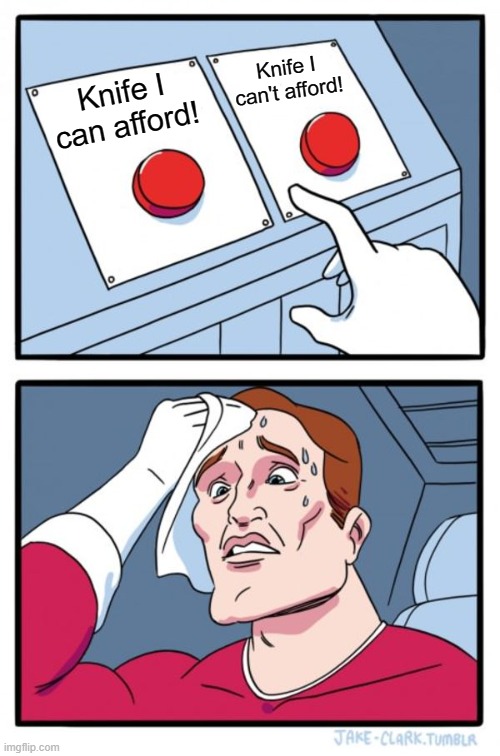
A maximum budget is something I need to think carefully about. I want to get the best possible knife for as little money as possible – seemingly an impossible and contradictory approach. Not necessarily: there are some really good knives available for not a lot of money.
I’m going to set my budget at £50 with a little leeway just in case I see something REALLY nice!)
So far so good. This will provide the four pillars of my knife search:
- Blade style
- Fixed or folding
- Blade length
- Price
If you use these four elements as your platform for making the decision, I don’t think you’ll go far wrong.
At my level of budget, I’m not overly concerned about the steel type – honestly, I don’t care if it has an extra 0.10% vanadium or not – for a maximum spend of £50 this really doesn’t factor in my decision.
Having said that, I want to be able to use a fire steel easily so I’d probably go with carbon steel for an easier strike.
Likewise, I’m not overly bothered about the handle material as long as it’s going to be comfortable to hold. I don’t expect it to be tightly wrapped in panda leather at this kind of money, but I also don’t want it to feel like it’s plasticky and cheap.
However, given it’s for bushcraft purposes I have decided on wood – it just feels more natural as well as being comfortable to hold.
I want it to have a bit of heft, but not be so heavy that it’s going to cause fatigue after using for a while.
Now it’s just a case of narrowing down the choices to get the knife I need…
In conclusion, I have picked the main factors which will affect my decision and that is what I will use to get my new knife. I have a budget, and I’m sticking to it.
Still, that ESEE-5P-E does look really nice….

